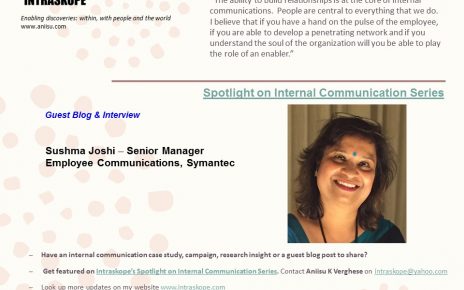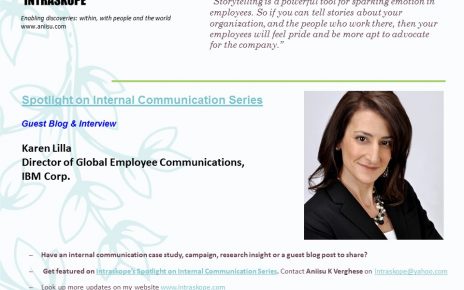Celebrating its decade-long journey as a pioneer in the diversity and inclusion space NASSCOM held its annual event at Bengaluru hosting industry leaders, practitioners, academicians, social activists and government authorities alike.
Unraveling a subject as complex and intense as these topics isn’t easy. Kudos to NASSCOM for assembling a galaxy of excellent speakers and leaders who helped the audience appreciate the evolving world of work and what it means for the future of diversity and inclusion in organizations. Through a mix of presentations, panel discussions and interactions the first day of the Summit had a lot to offer from rights for people with disabilities to the need for more women in the boardroom and managing different generations to empowering women at work.

The keynote address by Suresh Narayanan, Chairman, and Managing Director – Nestle India had the audience pondering over its actions and reasons for not challenging our judgments. He explained with videos the implications of our bias and the impact it had on the workplace. Among his tips were the need to focus on purpose and values, make a lasting commitment to change, appreciate the economic imperative for diversity and inclusion and address the societal issues around us while we go about our business.
Connectivity and how workforces can be more productive made for engrossing conversations with the panelists debating if robots are changing the world of work or if we are losing the plot by ignoring the human touch. It became evident that every organization is still coping with these changes and experimentation is underway to integrate and teach employees on the new ways of working.
From the discussions here are some trends I spotted with the world of diversity and inclusion.
· Everyone has a role to play: Success in diversity and inclusion can only be measured when the organization takes everyone along, a state changes its mindset or a country progresses collectively. Leaders can set the agenda and back it – however, it is the individual’s responsibility to understand, appreciate and make changes within and around that finally making a difference.
· Systems and policies are critical: To move the agenda forward also means the infrastructure must be in place to support the organization and employees scale up. When such investments are overlooked diversity and inclusion practices stall. Having robust policies and standards are as important as having a clear agenda on diversity and inclusion. Sustaining and ensuring your practices are ingrained means integrating actions with strong systems and processes.
· Reskilling employees is a reality: Employee engagement will need a revisit with freelance work, machine learning, and workforces on call, the order in the future. Those whose jobs evolve will need to be reskilled and the onus is also on the employee to be curious and flexible. We are now in a knowledge economy where information is available to everyone.
· Social responsibility meets diversity and inclusion: With how the workplace is changing it is no surprise that doing social good is closely linked with having a diverse workforce and an inclusive culture. This is the first time I am observing a strong convergence of both these aspects. It is also due to the changes in legislation, especially in India, for example, the Rights of Persons With Disabilities Bill and the CSR 2% Act that are making organizations realize the potential of revitalizing their workforces accordingly.
· Fix the mindset: It is evident that what’s stopping us isn’t the will or the skill to reimagine diversity and inclusion, but the mindset. From how people with disabilities are treated to the infrastructure at public and private locations which exclude certain communities, holds us back. There are many organizations opening their doors to diverse people with skills and talent but they fail to sensitize those who are already with their firms on how to work alongside these new individuals. Giving people a voice and challenging the current mindset are ways to overcome these concerns.
With the demographic advantage and ample resources the country has, it shouldn’t be difficult to raise the bar with diversity and inclusion. Already we have made amazing strides due to the hard work and commitment of many stalwarts in this domain. While there is still some way to go if we can address what holds us back we can make reap the benefits of an inclusive workplace and diverse workforce.


